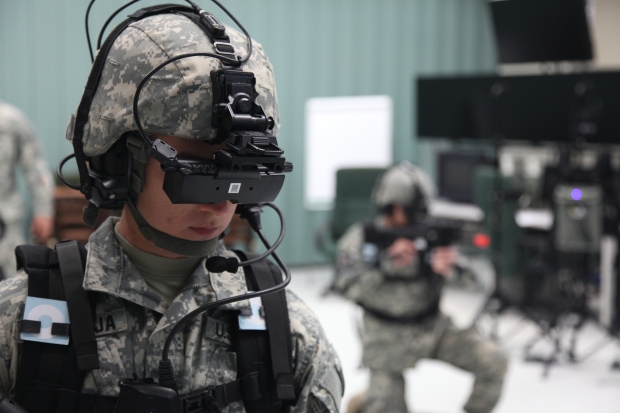What Virtual Reality Can Do for Las Vegas
A few weeks ago we discussed why virtual reality isn't just for gamers.It could easily change the face of journalism, and how we interact with it. But that's just the beginning. Virtual reality is a universal platform. I have a few ideas on how it could be used practically.
Education
When it comes to education, Nevada hasn't had the best track record. Our silver state's public school system ranks 49 out of 50, according to the Anne E. Casey Foundation's 2016 KIDS Count Data Book. To say we're in need of some serious help is an understatement. That's where virtual reality comes in.
Today's students are wired in 24-7. They're on their phones. They're playing video games. They're obsessed with Wi-Fi. Throwing a textbook at them isn't as effective as it used to be. Most students buy digital versions anyway. The youth are more visual now, and we need to accommodate that change. Companies such as Alchemy VR and Immersive VR Education create virtual reality content for this purpose.
Imagine teaching neuroscience in VR. Instead of reading about how the brain works, students can poke around in a virtual brain, picking and choosing where parts go like a puzzle. At a virtual reality panel at the Consumer Electronics Show in 2016, Jason Jerald of NextGen Interactions, a VR consulting company, highlighted this point, saying, "What if kids were getting addicted to education in the same way they were getting addicted to games?"
Virtual reality could play a similar role in medicine. With the UNLV School of Medicine on its way, this technology is well-suited for the classroom. Major virtual reality sets such as the HTC Vive and Oculus Rift both feature hand tracking controllers. In a simulated setting, students could perform medical practices on a 3-D rendered body. Doctors in Miami actually used Google Cardboard to view 3-D images of a 4-month-old's heart and lung to perform successful surgery.
Training

In light of recent terrorist attacks, police and military caution have percolated every state, including Nevada. The Clark County Commission recently approved banning bags on the Strip during large events to ensure safety, according to the Las Vegas Review-Journal in a June 21 article.
Say there were a terrorist attack made on Las Vegas. Would the police have the experience they need to control the situation? Most definitely. But virtual reality training could improve that effectiveness. It gives officers the ability to train in rare and dangerous scenarios that might not be as easy to simulate in real life. Virtual reality has a one up on real-life training, too, because you can go back and review how officers and soldiers did in their simulations from multiple angles and perspectives. If VR worked for flight simulation it could work for infantry training.
To digress a little, virtual reality is also useful in job training. Not only would it be cheaper in some cases, but it's faster.
Another (slightly odd) use for VR is sports. The Dallas Cowboys work with virtual reality company STRIVR to help them improve their game without the risk of injury. We could easily see the UNLV Rebels football team getting in on this.
Tourism
This May, Las Vegas' tourist volume hit almost 3.6 million people, a 3.9 percent drop compared to last year, according to the Las Vegas Convention Center Authority. Vegas' Entertainment Capital of the World moniker keeps the visitors rolling in each month, but with this sort of decline, there's room for some virtual reality experimentation. No advertisement sells Las Vegas like a walk on the Strip does. Imagine getting a virtual tour of your Bellagio suite just before visiting the botanical garden and stretching out by the pool bar. 3-D mapping makes it possible to generate these places in virtual reality. It'd be like stepping into a Google Map. But like, less creepy.
Tourism's use for virtual reality is similar to real estate's. One of the hardest sales to make is when a house is under construction, which a lot of them are in Henderson and Summerlin. But slap on a Google Cardboard or Gear VR right then and there and you're transported to what your dream home will look like. Once you're all settled in, Lowe's even has a VR tool called Holoroom that'll help you visualize your remodeling plans. Convenient, huh?
Of course, there are other, less substantial, more head scratching, uses for VR. Virtual reality porn is really trying to take off. We'd imagine in Las Vegas you could easily find a market for that (we're not judging, we swear).
One venture that seems promising is the creation of VR theaters. IMAX plans to open six of them by the end of 2016, according to The Verge. Will they be successful? Maybe. Only time will tell, which is what we'll say about all of these uses. Although VR isn't anything new, it's still in its infancy. Hopefully the right content creators and developers will come along to nurse it into a mature medium.
